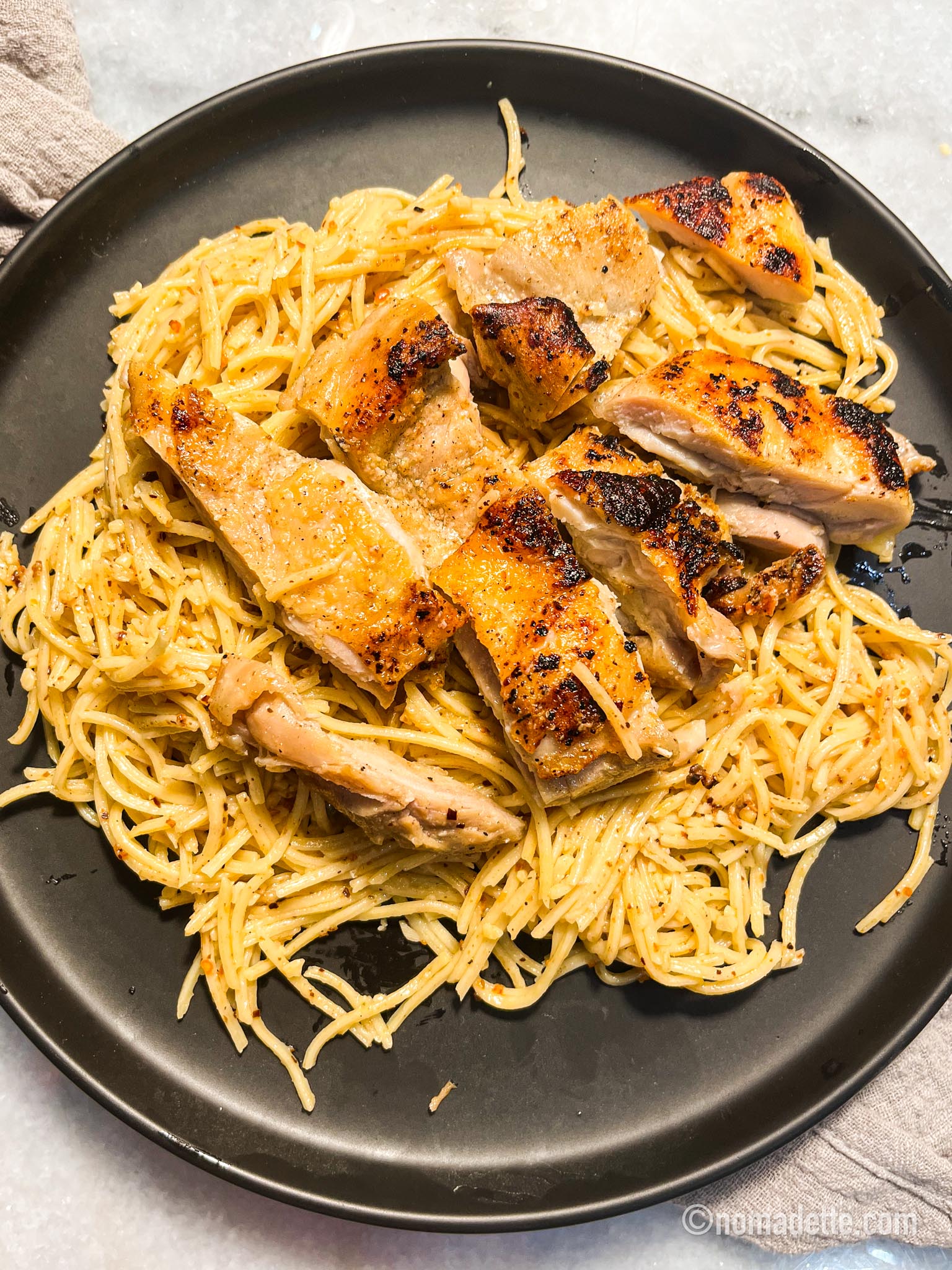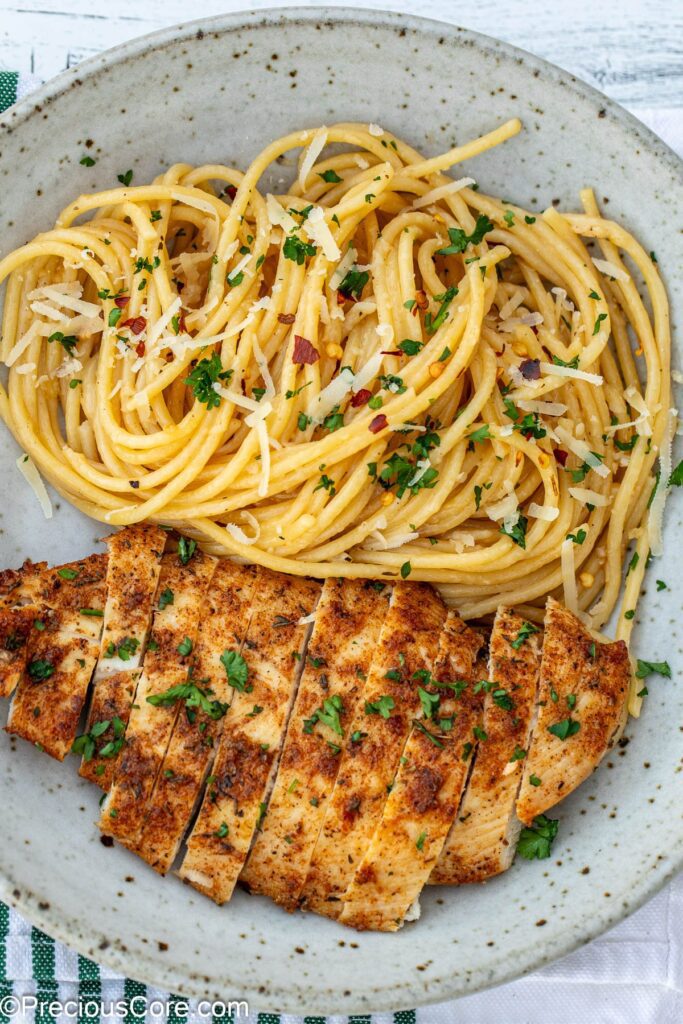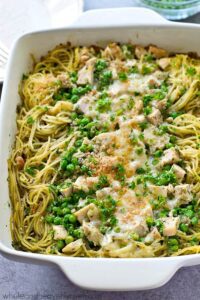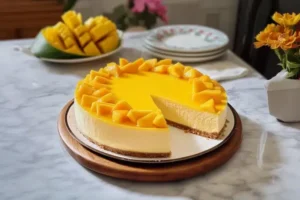Garlic Butter Chicken Pasta is a delicious recipe that combines amazing flavors and textures.
Garlic Butter Chicken Pasta combines humble ingredients into a dish that feels luxurious yet comes together in under 30 minutes. The combination of tender chicken, al dente pasta, and rich garlic butter sauce creates a comfort food classic that pleases both adults and children alike. This versatile recipe serves as a perfect canvas for customization based on preferences and what’s available in your pantry.
What makes this dish exceptional is the layering of flavors developed through simple techniques. Browning the chicken creates fond (those browned bits in the pan) that becomes the foundation for the sauce. The garlic infuses the butter without burning, while Parmesan cheese emulsifies into the sauce, creating a creamy consistency without excessive heaviness. Fresh herbs and lemon brighten the rich components, balancing each bite.
The History of Butter-Based Pasta Sauces
Butter-based pasta sauces have roots in Northern Italian cuisine, where dairy-rich preparations contrast with the olive oil-based sauces of the south. The simple combination of butter, garlic, and Parmesan known as “burro e parmigiano” has been a quick meal for Italian families for generations. The addition of protein like chicken represents a modern adaptation that makes the dish more substantial as a main course.

Italian-American cuisine further developed these butter sauces, often adding cream for extra richness. The result bridges Italian tradition with American preferences for creamy pasta dishes. This particular recipe represents this fusion beautifully—honoring Italian techniques while accommodating modern tastes and time constraints.
Ingredient Quality Matters
Pasta: Use high-quality durum wheat pasta—it holds sauce better and maintains better texture. The shape matters too—long pastas like fettuccine or linguine work well, but short shapes like penne can also be used. Always cook in generously salted water—it should taste like the sea.
Chicken: Chicken breast offers lean protein, but thighs provide more flavor and moisture. For best results, use uniform pieces to ensure even cooking. Pat dry before seasoning—this promotes better browning.

Garlic: Fresh garlic provides the best flavor. Minced finely, it distributes throughout the sauce. Avoid jarred pre-minced garlic, which often has off-flavors. For milder taste, slice instead of mincing.
Butter: Unsalted butter allows you to control seasoning. European-style butter with higher fat content creates richer sauce. For depth, brown the butter slightly before adding garlic.
The Science of Sauce Emulsification
The magic of this sauce lies in emulsification—the process of combining fat (butter and cream) with water-based liquids (chicken broth and pasta water) into a stable, creamy mixture. Parmesan cheese acts as an emulsifier thanks to its proteins and emulsifying salts.

Pasta water is crucial—the starch released during cooking helps bind the sauce to the pasta and stabilizes the emulsion. Always reserve some before draining. Add it gradually until you achieve the desired consistency—the sauce should coat the pasta without being overly thick or runny.
Maintaining proper temperature is key—too hot, and the sauce may break; too cool, and it won’t emulsify properly. Remove from direct heat when adding cheese, and toss continuously to create a smooth, cohesive sauce.
Technique Tips for Perfect Results
Browning Chicken: Don’t overcrowd the pan—cook in batches if necessary. Crowding creates steam instead of browning. Let chicken develop a golden crust before turning—this creates fond and deeper flavor.
Garlic Preparation: Mince garlic uniformly—large pieces can burn while small pieces disappear. Cook just until fragrant—burnt garlic becomes bitter. For layered garlic flavor, add some at the beginning and some at the end.
Sauce Consistency: The sauce will thicken as it cools and the pasta absorbs liquid. Make it slightly looser than desired in the pan. Remember that Parmesan will also thicken the sauce as it melts.
Combining Elements: Always combine pasta and sauce off direct heat. The residual heat is sufficient to meld everything together without overcooking. Toss vigorously to coat every strand evenly.
Customization Options
Vegetable Additions: Sliced mushrooms sautéed with the garlic, spinach wilted at the end, sun-dried tomatoes, or roasted red peppers all work beautifully. Add vegetables according to cooking time—harder vegetables earlier, delicate ones later.
Protein Variations: Shrimp substitutes beautifully for chicken—cook just until pink and opaque. For vegetarian version, use chickpeas or white beans added at the end just to warm through.
Herb Variations: While parsley is classic, basil, thyme, or oregano work well. Add delicate herbs at the end to preserve flavor. Rosemary should be added earlier to mellow its intensity.
Cream Alternatives: For lighter version, substitute half-and-half or whole milk for cream. The sauce will be thinner, so reduce more or add a slurry of cornstarch and water to thicken.
Wine Pairing Recommendations
The rich, garlicky flavors pair beautifully with white wines that have good acidity to cut through the richness. Unoaked Chardonnay provides complementary butter notes without overwhelming. Pinot Grigio offers crisp contrast that cleanses the palate.
For red wine lovers, a light-bodied Pinot Noir works surprisingly well—its acidity and fruit notes complement without dominating. Avoid heavy tannic reds that clash with the garlic and dairy components.
For non-alcoholic pairings, sparkling water with lemon provides refreshing contrast. Iced tea with citrus notes also complements the dish well.
Storage and Reheating
Leftovers keep refrigerated for up to 3 days. The sauce may separate upon reheating—gently warm in a skillet with a splash of cream or broth, stirring constantly. Microwave reheating tends to make pasta rubbery—stovetop is preferred.
This dish doesn’t freeze well—the dairy-based sauce may separate upon thawing. The pasta becomes mushy when frozen and reheated. For meal prep, prepare components separately and combine when ready to serve.
To refresh leftovers, add fresh herbs and a squeeze of lemon after reheating. This brightens flavors that may have muted during storage.
Presentation Techniques
Serve in warm shallow bowls to maintain temperature. Use tongs to twist pasta into nest-like arrangements for visual appeal. Place chicken pieces strategically around the pasta rather than mixed throughout.
Garnish with fresh herb sprigs, additional Parmesan shavings, and a light drizzle of extra virgin olive oil. The oil adds flavor and beautiful sheen. Serve with crusty bread for soaking up remaining sauce.
For family-style serving, present in a large warmed bowl or platter. Place serving utensils strategically to make self-service easy. Provide extra Parmesan and red pepper flakes on the side for customization.
Final Thoughts
Garlic Butter Chicken Pasta exemplifies how a few quality ingredients, prepared with care and attention to technique, can create a meal that feels both comforting and special. As you savor each flavorful bite, appreciate the simple alchemy that transforms everyday components into something greater than the sum of its parts. May this recipe become a reliable favorite in your culinary repertoire for years to come.

Garlic Butter Chicken Pasta
Ingredients
Method
- Bring large pot of salted water to boil
- Cook pasta according to package directions until al dente
- Reserve 1/2 cup pasta water before draining
- Drain pasta and set aside
- Season chicken pieces with salt, pepper, and Italian seasoning
- Heat olive oil in large skillet over medium-high heat
- Add chicken and cook until golden brown and cooked through (6-8 minutes)
- Remove chicken from skillet and set aside
- Reduce heat to medium, add butter to same skillet
- Once melted, add garlic and cook until fragrant (30 seconds)
- Add chicken broth and scrape up any browned bits from pan
- Stir in heavy cream and bring to simmer
- Return chicken to skillet along with cooked pasta
- Add Parmesan cheese, toss to combine
- If sauce is too thick, add reserved pasta water a tablespoon at a time
- Stir in lemon juice, zest, and parsley
- Season with salt and pepper to taste
- Garnish with additional Parmesan and red pepper flakes if desired
- Serve immediately while hot



